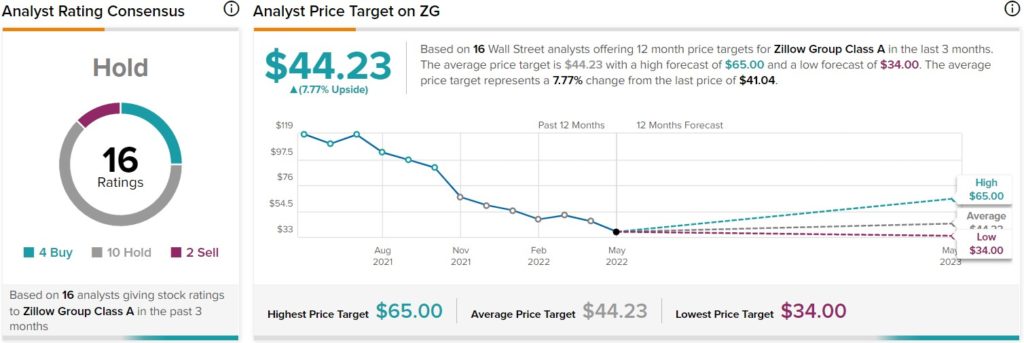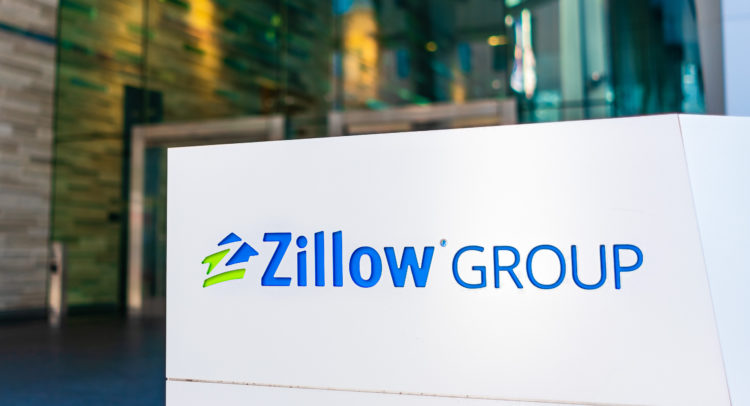The past three years have been filled with several highs and lows for Zillow (Z) (ZG). Zillow initially started in the hope of bringing transparency and ease to the U.S. real estate market. While current sentiment appears bleak, Zillow has the financial flexibility to continue innovating within its market.
Invest with Confidence:
- Follow TipRanks' Top Wall Street Analysts to uncover their success rate and average return.
- Join thousands of data-driven investors – Build your Smart Portfolio for personalized insights.
Despite the short-term headwinds and a downward trend, I would give Zillow a neutral rating, as forward estimates could be revised down in the coming quarters.
Zillow’s U-turn away from home buying has done both reputational and financial damage. Management estimates that they’ll be able to fully unwind the inventory from their home-buying segment by Q2 while seeing some financial recuperation. Earlier this month, management said,
“We now believe that the total cash flow generated from the wind-down process of our iBuying inventory and operations will be approximately $450 million.”
Upon telling shareholders this news, management announced that the board recently authorized a $1 billion buyback. This is on top of the $100 million remaining buyback capacity from the previous buyback authorization of $750 million in Q4.
This will have a material effect on long-term EPS, as the current market capitalization of Zillow sits around $9.8 billion. The buyback, at current levels, would represent an 11.2% increase in company ownership (if you include the $100 million of remaining buyback capacity).
Furthermore, Zillow is heavily focused on its ‘Housing Super App,” which it hopes will save time and money for users. Management also has an ambitious target of reaching 730,000 customer transactions by 2025.
Achieving these targets would put Zillow’s 3.5-year forward EV/EBITDA at around 4x. However, management failed to share an EBITDA breakdown by segment for their 2025 target. The target assumes a 3% annualized home price appreciation and 6% market penetration.
It’ll be interesting to see how Zillow’s mortgage business performs over the next three years, as mortgage penetration from premier agents is still very low – sub 5%. Zillow’s premier agents aren’t likely to recommend Zillow as the loan provider over a local mortgage advisor whom they have a close relationship with.
Additionally, it’s yet to be seen how/if Zillows Super App can bring convenience to real estate transactions. A huge part of real estate is the relationships between realtors and clients. Many homeowners have existing relationships with realtors, and new buyers may prefer asking friends/family to recommend an agent.
This is not something that will go away – so it’s hard to know how well the “one-stop-shop” real estate app for homebuyers will perform.
Housing Market Dynamics
The housing market has benefited from years of undersupply, a growing population/economy, and the lowest (and longest) interest rate environment in history. In Q1, U.S. median home prices reached all-time highs of $428,000. At the same time, 30-year mortgage rates have climbed to 5.3% – the highest since 2009.
A nationwide housing correction comes when there are changes in housing supply, buyer affordability, or interest rates (or a combination of these factors). On the demand side, the factors are interest rates, population growth, and affordability. On the supply side, the number of new housing starts is worth watching.
While interest rates and affordability are in question over the coming years, one expert warned that the U.S. housing shortage could last a decade. There is very little visibility on where interest will land and how far consumer health will deteriorate.
Zillow’s management also warned of larger deviations in economic forecasts between economists, which is why Zillow’s share price has decreased so dramatically despite stronger operational fundamentals in Q1.
Nonetheless, a housing slowdown would push back Zillow’s 2025 targets, which would crush investor confidence. Furthermore, the $5,200 average revenue per customer assumption in Fiscal Year 2025 could easily change if real estate prices correct lower following higher mortgage rates.
Valuation & Financials
Zillow has an enterprise value of $8.75 billion and a market capitalization of $9.8 billion. Therefore it can be argued, based on current guidance, that Zillow has been significantly de-risked. Below are potential valuation multiples in this fiscal year and the next fiscal year.
FY-2022 EBITDA: $743M = six month forward EV/EBITDA 11.8x
FY-2023 EBITDA: $851M = 1.5 year forward EV/EBITDA 10.3x
Based on the consensus EBITDA guidance above, the earnings multiples seem fair. However, the margin of safety (or lack thereof) fails to protect from more downside, which is what’s needed in the current market environment.
Therefore to invest in Zillow today, investors need to believe in management’s 2025 targets with a high degree of conviction, as there are no short-term catalysts. Instead, the level of uncertainty has increased, forcing investors to sell Zillow for more stable and cash-flow-rich businesses despite the announcement of a $1 billion buyback authorization.
By unwinding its housing inventory, Zillow avoided significant potential asset writedowns that would come in a real estate correction. With long-term debt of $1.65 billion and cash of $3.6 billion, Zillow has the flexibility to invest in new go-to-market ideas like the new Housing Super App.
As of Q1, Zillow had a quick ratio of 3.18x, and a current ratio of 4x, demonstrating that it is fully prepared should the macroeconomic environment deteriorate further.
Wall Street’s Take
Of the 16 analysts covering Zillow, there are four Buy ratings, 10 Holds, and two Sell ratings. The average Zillow price target of $44.23 implies 10.7% upside potential.

Conclusion
Zillow’s loan business struggles with penetration due to close relationships between realtors and their clients. However, Premier Agents (IMT segment) is still a great source of income for Zillow and will likely continue growing along with the market. As Zillow is a software service business at heart, it benefits from the rapid scale that comes with a successful platform.
If Zillow can execute effectively with its Housing Super App in a way that adds convenience in the real world, then Zillow could easily double its current valuation, especially if it achieves an adjusted EBITDA margin of 45%.
Read full Disclosure









